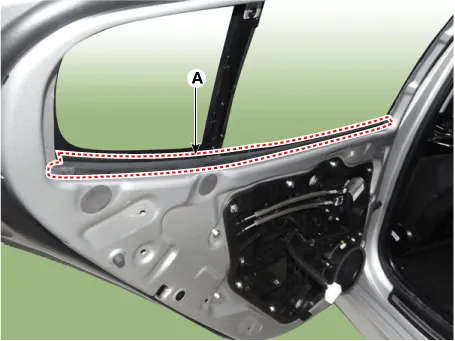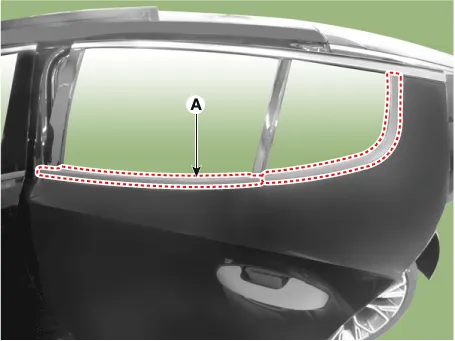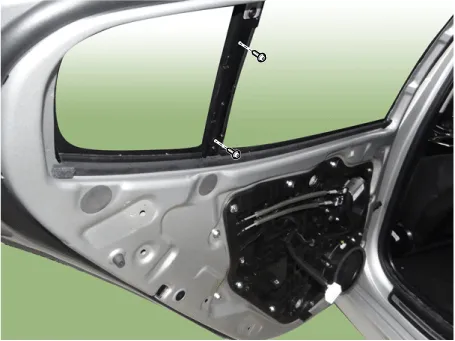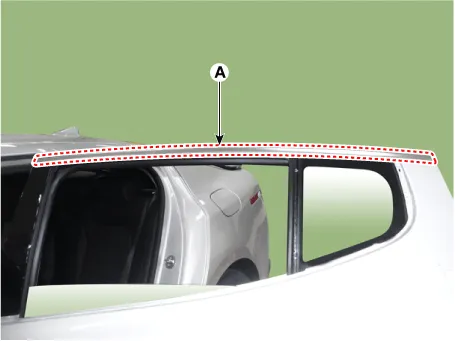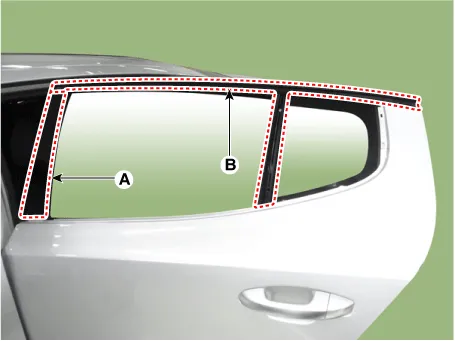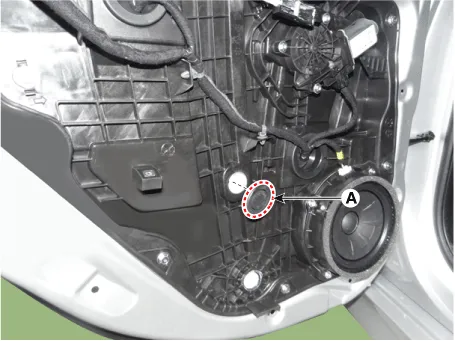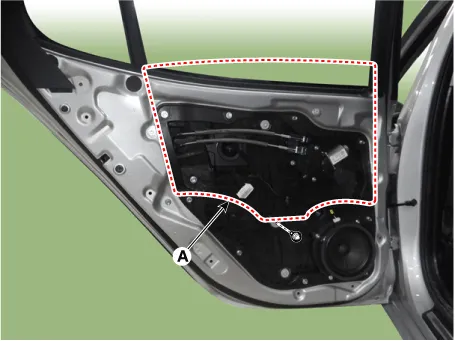Kia Stinger CK: Rear Door / Rear Door Window Glass
Components and components location
| Component Location |

| 1. Rear door window glass |
Repair procedures
| Replacement |
Put on gloves to protect your hands. |
|
| 1. |
Remove the rear door trim. (Refer to Rear Door - "Rear Door Trim") |
| 2. |
Remove the rear door frame inner cover (A) by using a remover.
|
| 3. |
Remove the rear door belt inside weatherstrip (A).
|
| 4. |
Remove the rear door belt outside weatherstrip (A) by using a remover.
|
| 5. |
Remove the rear door drive channel (A) after loosening the mounting screws.
|
| 6. |
Remove the rear door frame molding (A) by using a remover.
|
| 7. |
Remove the rear door frame garnish (A) and glass run.
|
| 8. |
Remove the rear door window glass mounting hole plug (A).
|
| 9. |
Loosen the mounting bolt, and pull out the rear door window glass (B) by tilting it sideways.
|
| 10. |
Install in the reverse order of removal.
|
Other information:
Kia Stinger (CK) 2018-2023 Service Manual: Fender Garnish
Repair procedures Replacement Put on gloves to protect your hands. • Use a plastic panel removal tool to remove interior trim pieces without marring the surface.Kia Stinger (CK) 2018-2023 Service Manual: Active hood lift system
Description and operation Description The system reduces injury of pedestrians by lifting the hood when a accident occurs between the pedestrian and vehicle. It may prevent a secondary impact between the pedestrian's head and engine components. Components and components location Components Location 1.



